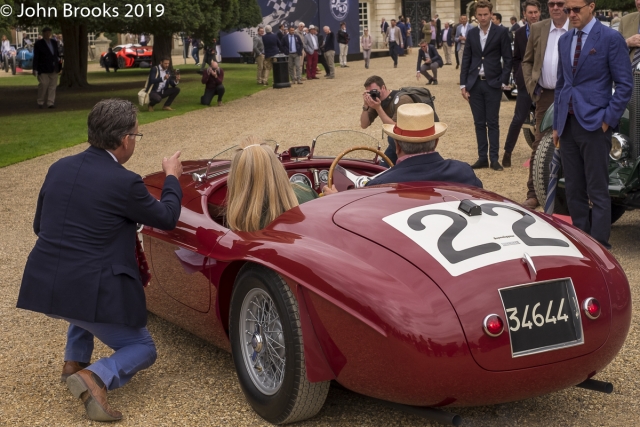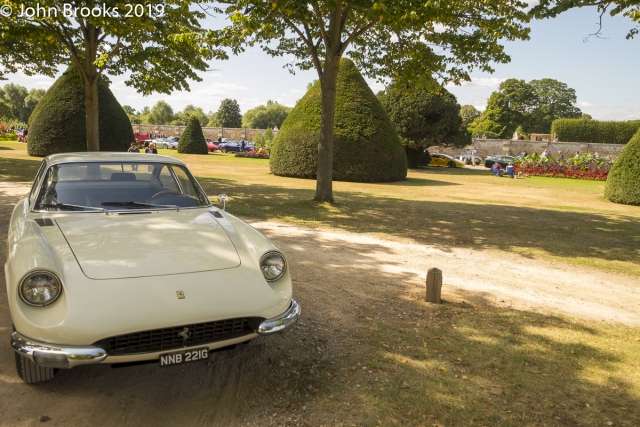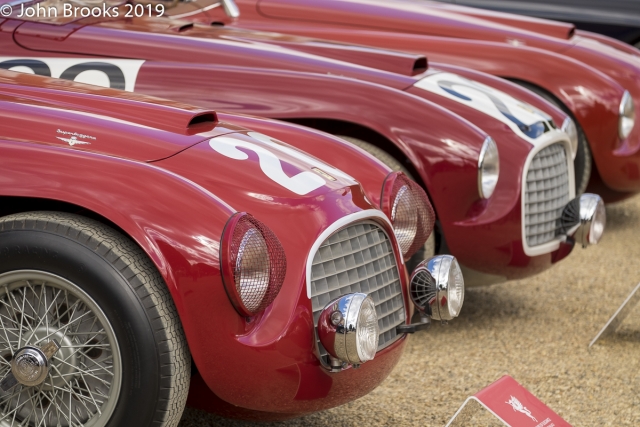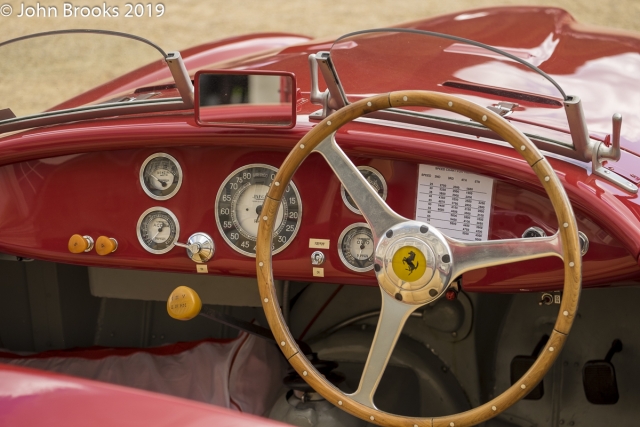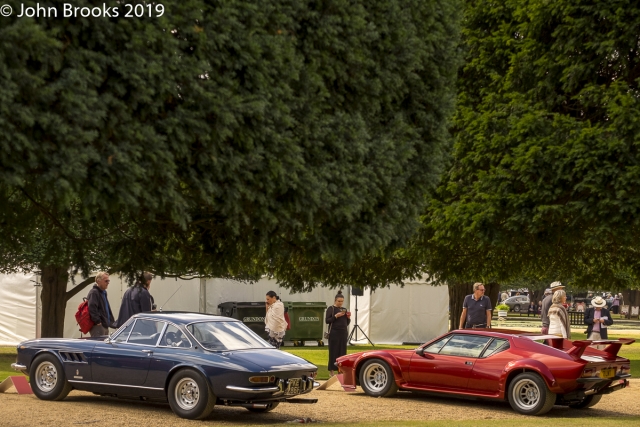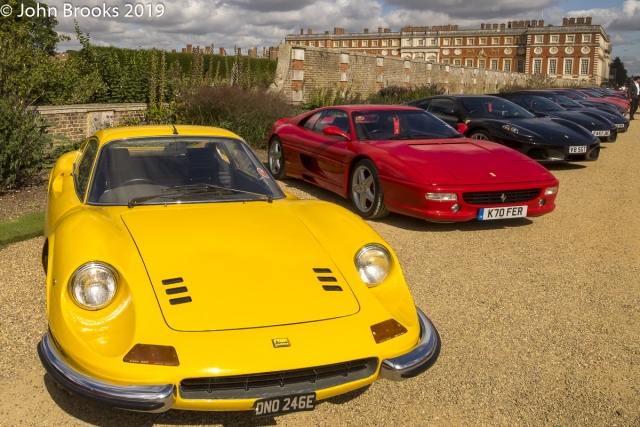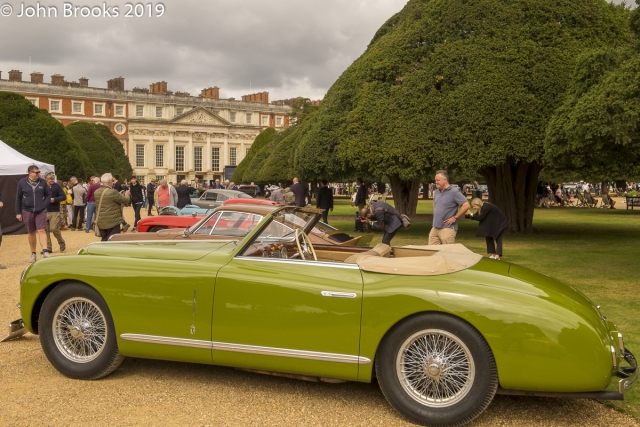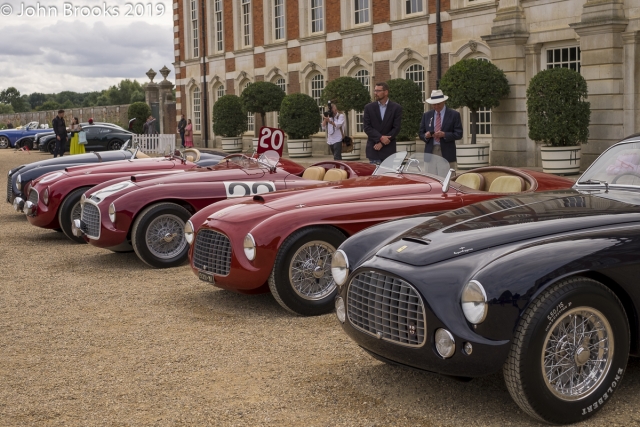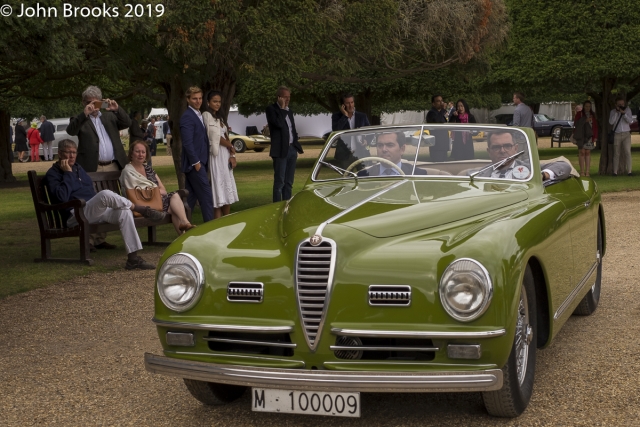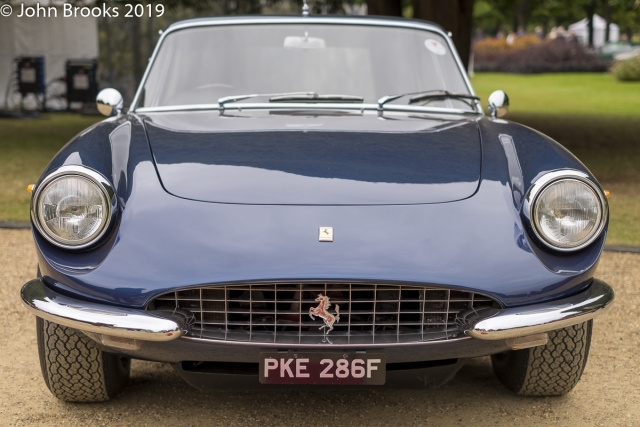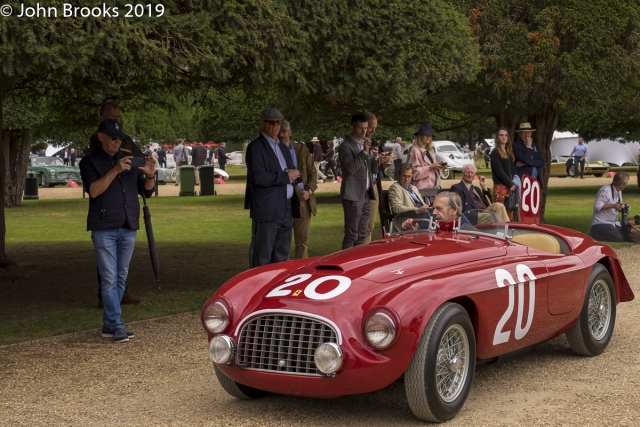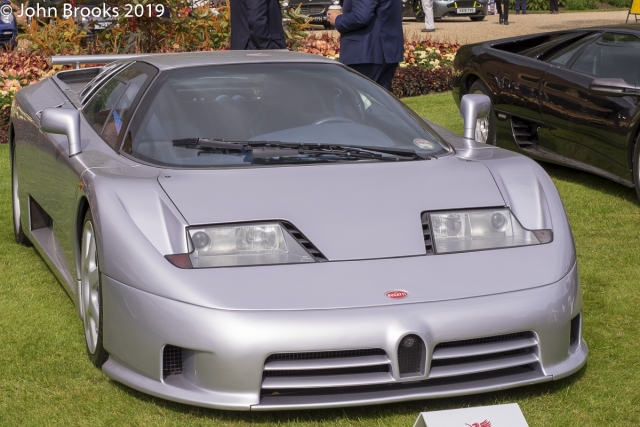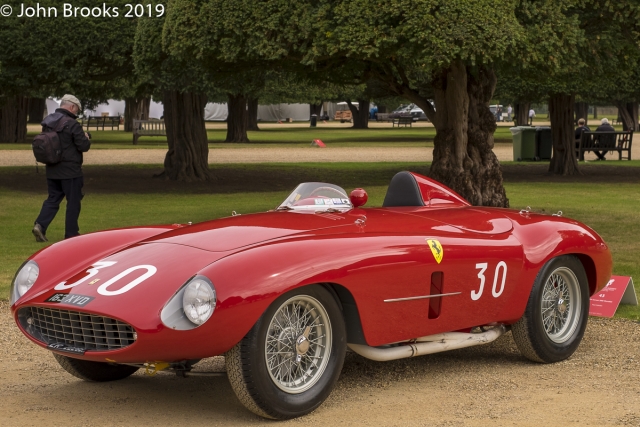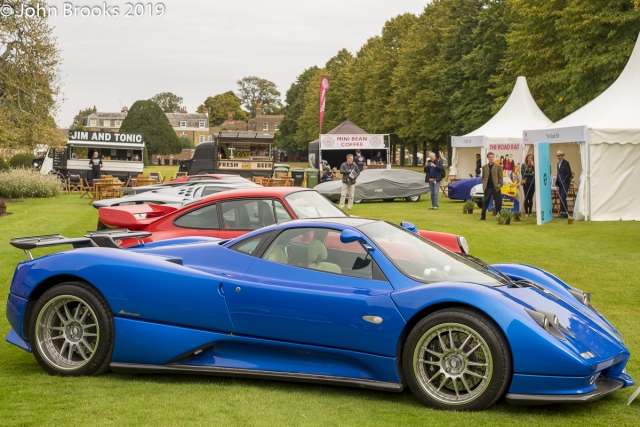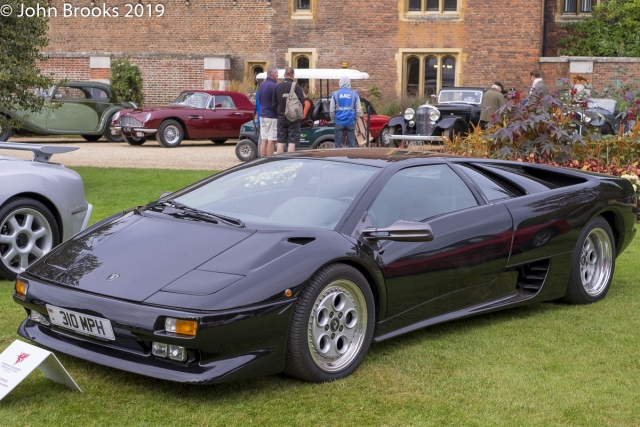
The influence of Italy on the automobile has been immense, particularly in the performance and style areas. So, when considering the the rich tapestry of cars on display at an event like the Concours of Elegance, it pays dividends to seek out the Italian element and give it the due attention it deserves.

Within minutes of entering the Great Fountain Garden I stumbled across two Italian classics, this Lamborghini Diablo, the answer from Sant’Agata Bolognese to the Ferrari F40. At this point in time Lamborghini had just been acquired by Chrysler, the deal was done the day after the first Diablo prototype ran. Thirty years on and the Diablo still creates an impact when encountered.

The same can be said of the Pagani Zonda, perhaps even more so, given the rarity of the beast. Just around 150 examples are thought to have emerged from the factory at San Cesario sul Panaro. This is located in the mechanically fertile territory between Modena and Bologna, not far from Lamborghini’s factory.

A complete contrast is the 1907 Diatto A Clément, it being the only known survivor of this model. It was the result of a partnership between the Turin coachbulider, Diatto, and French entrepreneur, Adolphe Clément-Bayard who was involved in the design of bicycles, tyres, aeroplanes as well as cars. He was a pioneer in motor sport entering three cars in the 1906 French Grand Prix, held near Le Mans, generally agreed to be the first Grand Prix. His son, Albert, finished third in the race but was killed in a crash during practice for the same event in 1907.
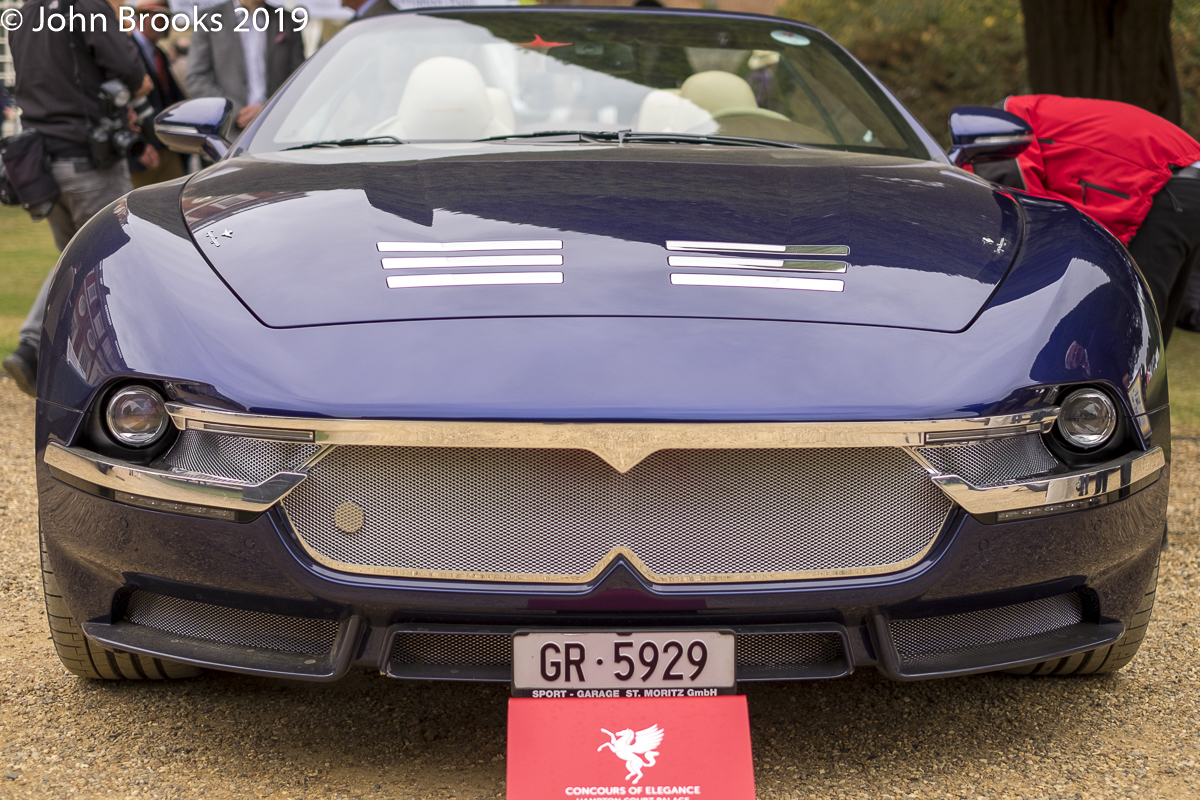
Bang up to date is this salute to the past. In 1959 the Shah of Persia ordered a very special Maserati, a development of the 3500 GT, with a larger V8-engine to power it and various bespoke features to distinguish it from lesser mortals’ cars ; it was the quickest GT of the time. Fast forward seventy years and Touring was modifying a Maserati once more. The Touring Superleggera Sciàdipersia (Shah of Persia) Cabriolet was the result. Based on a current Maserati GranCabrio, the Sciàdipersia is a throwback to the days when a manufacturer would supply a chassis and powertrain, then a coachbuilder would style and fit out the car to the customer’s individual specification.

This Ferrari 500 Mondial is a Series I car that was bodied by Scaglietti on drawings made by Dino Ferrari, one of five such examples. It was purchased from the factory by Guido Petracchi who entered it in the 1955 Ethiopian Grand Prix which he won. It was later displayed in the Italian pavilion at the Silver Jubilee Fair of Addis Ababa. It had another outing at the Cote de Asmara race in 1956, where it took overall victory with Gaetano Barone behind the wheel. Two further victories came shortly after, but then the car was put into long-term storage in Ethiopia. In 1970, car collector and dealer Colin Crabbe was on vacation in Asmara, Ethiopia, when a local led him to a small lock-up containing the totally original 500 Mondial – Crabbe bought it on the spot.
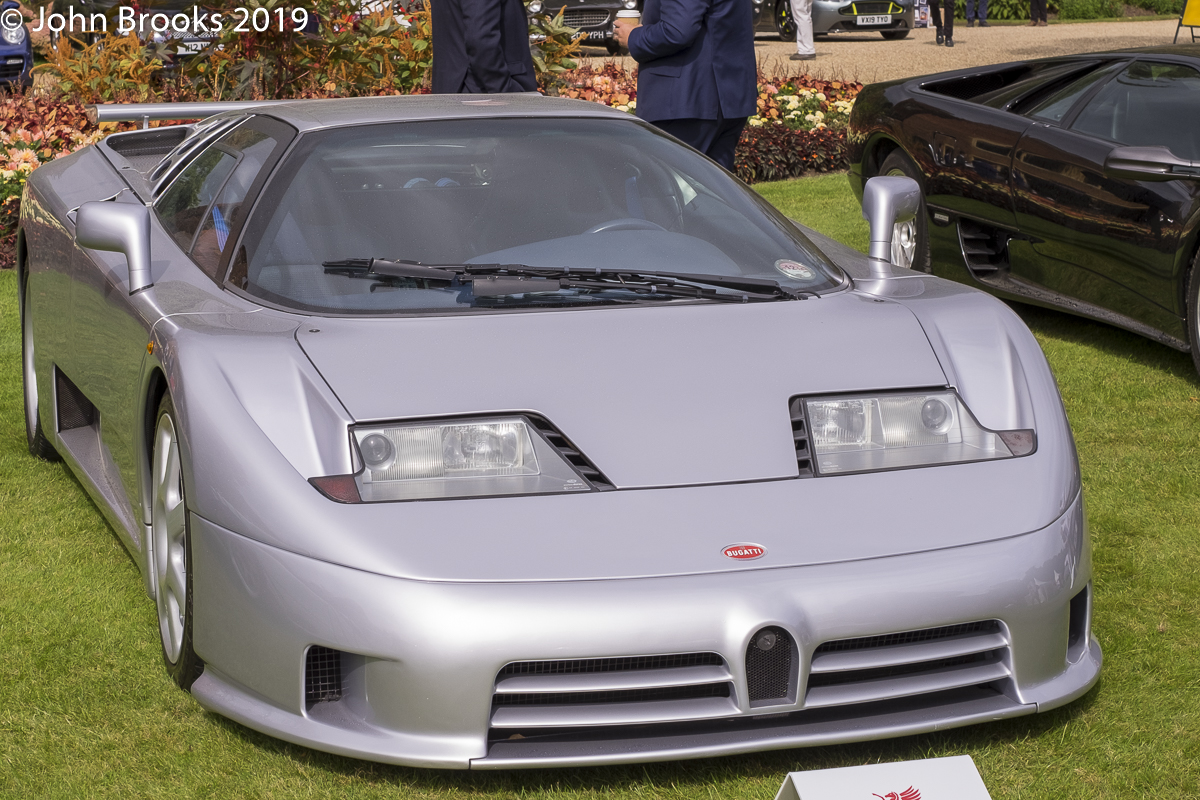
Another striking Italian is this Bugatti EB110…………..I looked at this episode in Bugatti history a while back HERE

This elegant 1954 Alfa Romeo 1900 C SS Zagato has a proper race pedigree, being owned from new by Jo Bonnier, who would go on to have a successful career in F1 and endurance racing. In the three races that he started with the Alfa he would take class honours each time, winning the 1955 Swedish Grand Prix outright.

1949 was a most significant year for Ferrari. Victories in the Mille Miglia and both the 24-hours of Le Mans and Spa established Ferrari at the very summit of endurance competition. Amazingly these two 166 MM Barchettas achieved the three triumphs and both were at Hampton Court for our appreciation.

Chassis #0010M was entered in the 1949 Mille Miglia but there is some dispute as to whether it was the Felice Bonetto and Carpani car that finished second overall after leading to Rome. Some sources declare it was the Piero Taruffi and Sergio Nicolini car that retired with a broken transmission at Ravenna. It was then sold to Luigi Chinetti who entered it at Le Mans for Jean Lucas and ‘Ferret’ (Pierre Dreyfus). All went well for the pair till it got dark on the Saturday evening. Dreyfus overturned 166 MM, without injury, at White House Corner, their race was over.

A few weeks later the Ferrari was entered in the Spa 24 Hours with Chinetti and Lucas on driving duties. At the halfway point they assumed the lead and were cruising towards an easy victory till drama hit in the very final stages of the race. Motor Sport described the scene. “Louveau’s Delage had motored faultlessly, so that it really looked as if the Le Mans maladies had been cured. Then, after some 23 1/2 hours, oil began to stream from the engine. Louveau went on gingerly to his pit, intending to wait and coast over the line after Chinetti had been flagged the winner. Reminded that this would disqualify him, he set off, almost at a walking pace, to complete his last lap in the stricken Delage. Meanwhile, Chinetti, doubtless a trifle weary, came on to the oil patch flung by Louveau’s sick car at Hallowell Corner. The Ferrari slid out of control, knocked down a woman spectator and hit a house. Shaken but still irrepressible, Chinetti leapt out, rendered the unfortunate woman first-aid, got in again and drove slowly to his pit. There the leading Ferrari was hastily examined and then sent out to limp round for the two more laps necessary to win the race.“

Only one car has won both the Mille Miglia and the Le Mans 24 Hours, a feat that can never be equalled. This Ferrari 166 MM is that car, chassis 0008M, and it was also at the Concours of Elegance. In April 1949 Clemente Biondetti and Ettore Salani gave Ferrari its second win on the Italian road racing classic, after Biondetti had won the previous year.

Lord Selsdon purchased the car and invited Luigi Chinetti, already a two-time winner, to drive with him the 1949 Le Mans 24 hours, the first post-war running of the event. Chinetti kept in touch with the faster Delahayes for the first quarter of the race. Then the Ferrari was delayed allowing the other 166 MM, featured above, to grab the lead. That car had an accident and one of the Delahayes struck problems, allowing the Ferrari to build a lead during the brief hours of darkness at La Sarthe.

Motor Sport’s correspondent followed the race closely. “The crowd on the balcony clapped — at 4.26 a.m., mark you! — as Selsdon took over the leading Ferrari from Chinetti, who had driven the car continuously up , to this point.“
The Ferrari kept its lead over the faster Delahaye as it encountered fewer problems and spent less time in the pits. Then Delahaye retired and the Ferrari came under pressure from Louveau’s Delage. Then came the next twist in the race. “Came drama! Louveau brought the Delage in in dire trouble, but went on. Shortly afterwards Chinetti was stationary at his pit, with Louveau in again. On his first stop the plugs had been replaced, water added, and the rear wheels changed, so we knew, now, that something more serious was amiss. The work was good, calm, but half-an-hour was lost while extensive work was done on the engine, concluding with more new plugs — as with Gérard’s Delage, too much oil seemed to be getting “upstairs.” The Ferrari left first, but it, too, lost much time, work apparently being done on the front of the chassis, necessitating attempted removal of a headlamp.“

The race ground on to the finish as it usually does at Le Mans. Chinetti had to be helped from the Ferrari after spending more than 22 hours behind the wheel, a truly heroic performance. The Italian, who now lived in the United States, had scored his third victory in the great race. Selsdon and Chinetti received their trophies from Vincent Auriol, sixteenth President of the French Republic, the first time that the head of state had attended the race; it would be twenty-three years before a French President returned.

The Italians at the Concours of Elegance provided a rich and sumptuous confection for those lucky enough to attend, roll on 2020!
John Brooks, July 2020


